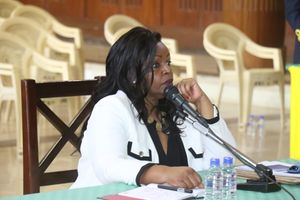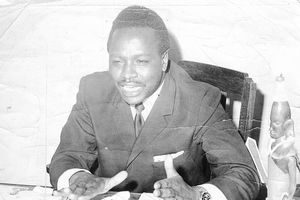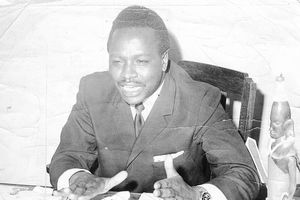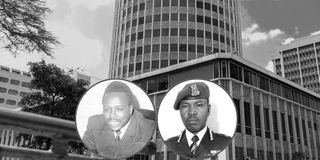
Josiah Mwangi Kariuki (inset left) vanished from Hilton Hotel, Nairobi (background). He was last seen walking out of the hotel with Ben Gethi, the General Service Unit commandant (inset right).
“We do not want a Kenya of ten millionaires and ten million beggars” – J.M Kariuki.
On March 2, 1975, fifty years ago, Josiah Mwangi Kariuki—Kenya’s most outspoken populist politician—vanished from Hilton Hotel, Nairobi. Better known as JM, the Nyandarua North MP was last seen walking out of the hotel with Ben Gethi, the General Service Unit commandant. He was never seen again, alive. Yet, when Gethi was summoned to tell his part of the story – his version did not tally with that of eyewitnesses. Others close to Gethi refused to cooperate with the Select Committee of Parliament that had been picked to investigate JM’s murder. They all got away with it.
Fifty years later, nobody has been arrested over the murder – and the question remains: Who killed JM Kariuki and why?
A maverick in the political arena, JM stood apart. He was not only a man of means but was a power man draped in wealth and influence. With a rich portfolio spanning lucrative casino directorships, high-stakes gemstone trading, and vast agricultural ventures, JM was not an ordinary politician. His 1962 ties to Mossad and as one-time Jomo Kenyatta’s private secretary only deepened his mystique. JM had made many enemies – and friends too – and they never shied to remind him to watch out.
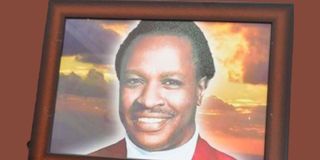
A portrait of Nyandarua MP Josiah Mwangi Kariuki, popularly known as JM Kariuki.
One evening in December 1974, at the Stags Head Hotel, JM sat nursing a drink alongside Mark Mwithaga, the then MP for Nakuru Town. The air was thick with quiet conversation—until the room shifted.
Through the doors strode Peter Muigai, Kenyatta’s eldest son, flanked by Nakuru mayor Mburu Gichua. They made no pleasantries and no pretence of civility. Their words cut through the air like a blade:
"You have brought trouble here from Nyandarua. Be warned—this is Nakuru, and we can finish you at any time!"
Mwithaga, still shaken by the encounter, later told a local newspaper, “Muigai and Gichua never even bothered with greetings. They simply stormed in, issued their warning, and left. We were stunned—very, very shocked.”
It was not the only time that JM had been threatened by political honchos of the 70s.
General Service Unit (GSU) Commandant Ben Gethi.
In 1975, President Jomo Kenyatta had collapsed three times, igniting a flurry of speculation within his inner circle about the looming question of succession. Amidst this uncertainty, JM Kariuki’s larger than life image loomed. Fearful that Kariuki harboured presidential ambitions, the establishment – or rather the Kiambu mafia - moved with ruthless precision which explains why the murder took place in 1975.
The events leading to JM’s murder unfolded like the plot of a dark political thriller—except this was real, and the stakes were life and death. The first was the attempt to link JM to a series of bombings that had taken place in Nairobi. Police informer, Peter Kinyanjui, alias Mark Twist, had told CID director Ignatius Nderi that JM was linked to it. It was a lie.
On Saturday, March 1, 1975, JM was believed to have secured a seat on a Mombasa-bound bus, possibly seeking refuge from the wave of bombings engulfing Nairobi. However, fate had other plans. That very night, a powerful explosion ripped through the bus, reducing it to a smouldering wreck of twisted steel. Twenty-seven people perished in the inferno, while over a hundred others lay wounded. Yet, the intended target was nowhere near the scene—JM had never boarded the ill-fated coach. It was later claimed that intelligence contacts had warned him to stay away.
That Saturday night, JM spent his time at the Casino, where he was a shareholder, accompanied by Ben Gethi. Gethi left the Casino at 1:30 a.m. on Sunday, March 2. Later that morning, at approximately 9:30am, Gethi arrived at JM’s house and went straight to his bedroom. His reasons for seeking JM so early remained unclear, especially considering they had been together just hours earlier. At the time, JM was still asleep, having returned home at 5:30 am. Upon waking, he informed his wife, Nyambura, who was away in Gilgil, about Gethi’s visit and mentioned that they had agreed to meet later that evening. It later emerged that Gethi was delivering a pistol to JM.
The police, still intent on implicating JM in the bombing, reached out to Mark Twist, who had just been jailed for defrauding a bank. The man, who had ingratiated himself into JM’s inner circle, was not only freed but asked to assist the police in implicating the politician.
That Sunday morning, Mark Twist drove to the CID director Ignatius Nderi’s office, and they placed a call to JM at 11.30 am. “The call was an abortive attempt to get JM to state something which might be construed as corroborating the spy’s allegation that JM was a party to all the bombing incidents which had taken place,” the Parliamentary Select Committee that investigated the murder concluded.
Described by Parliament as a “criminal of the worst possible character: Mark Twist, as he was better known, always purported to be JM’s friend but, according to himself, he was a police informer whose duty was to spy on the politician.
It appears that stage had been set for a damning betrayal. Shortly after speaking to Mark Twist, JM left home and drove to the Hilton Hotel where he arrived at 12.30 pm. He had a cheque of Sh4,000, and he requested to cash it – but got only Sh 1,000 and was asked to pick the balance later.
Witnesses said several things happened at the Hilton on that day. At 1 o’clock he went outside and listened to the news in his car parked outside the hotel. He then spoke to a Kenya Police Reservist, Mr Young before entering the hotel for lunch. What he didn’t know was that Mr Young was also in a group that was keeping an eye on him.
After lunch, JM drove to the Ngong races and arrived there at 2.30 pm. It was claimed that Ben Gethi followed him to the races and that they left together after the second race. Gethi denied following JM to the races. It was also known that JM drove towards Nairobi and stopped by Adam’s Arcade – the house of his second wife Terry Kariuki, who was out shopping. He changed clothes and left before Terry returned.
At around 5 pm, before JM arrived at the Hilton, ominous preparations took place. Patrick Shaw, the feared police reservist, and Mr Young cleared out the usual crowd outside the hotel—parking boys, taxi drivers, and perhaps anyone who might bear witness. Shortly after, CID chief Ignatius Nderi arrived with National Youth Service deputy director Waruhiu Itote, accompanied by Pius Kibathi, a trained policeman who never joined the force, and Councillor John Mutung’u of Olkejuado.
JM, unaware of what was happening, parked his Merc near the Hilton Hotel entrance and collected his Sh3,000 balance. He then went to the coffee shop with a friend. While they were having tea, Gethi arrived and spoke to JM. JM told his friend that Gethi had asked to see him that evening between 8 and 9 o’clock. They left together. Another witness said that Gethi and JM stood near the lifts, and they walked out by the main entrance and walked towards Mama Ngina Street.
The Maasai herdsman who discovered JM's body behind Ngong Hills (left). A herder points to where his body was found (right).
But Gethi insisted that he only spoke to JM at the coffee shop and left him there.
From the Hilton, JM was taken to the Special Branch headquarters at Kingsway House on Muindi Mbingu Street. There, a meeting awaited him. As he stepped in, his heart must have pounded—one of the men in the room was Wanyoike Thungu. Their eyes met.
CID director Ignatius Nderi took the lead, laying out accusations. JM, steadfast, answered every charge. But then, Thungu struck where it hurt—he accused JM of mishandling funds meant for scholarships during his tenure as Kenyatta’s private secretary. He also brought up compensation money for Mau Mau fighters whose lands had been taken, funds that had passed through JM’s hands when he served in the Agriculture Ministry. The interrogation turned heated.
In a flash of rage, Thungu, a towering figure, is claimed to have smashed his fist into JM’s mouth with brutal force, knocking out three teeth. JM reeled, blood spilling from his lips. Instinctively, his hand darted to his pocket, reaching for the pistol given to him that morning by Ben Gethi—his last hope.
But Gethi, the only man in the room who knew JM was armed, was quicker. In a blur, he drew his service revolver and fired ostensibly in protection. The bullet tore through JM’s upper right arm, sending him sprawling. Blood pooled beneath him. The room fell silent, save for JM’s ragged breaths.
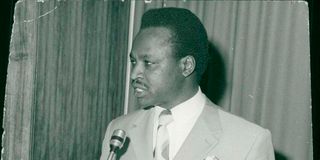
Politician Josiah Mwangi Kariuki, who was popularly known as JM Kariuki.
A phone call was made. A senior politician was informed. JM was dead.
JM’s wounded body was thrown into a car belonging to Councillor John Mutung’u. Hours later, his bullet-ridden corpse was discovered by two Maasai elders in the Ngong Hills. His brutalized body told its own story—three teeth missing, gunshot wounds, his life stolen in the shadows of power.
But there were last witnesses: A hotel security man, Fred Sing'ombe, saw JM and Gethi enter a Peugeot station wagon behind the hotel. JM's white Mercedes Benz registration KPE 143 was left in front of the Hilton Hotel, where the family found it when the MP disappeared.
Postmortem disclosed that five shots had been fired into his body. Three of these were of 7.62 mm calibre fired from a Tokarev pistol and two were of .38 calibre, perhaps a .38 Walther or a .38 Mann. The time was consistent with the time he left Hilton Hotel.
Tomorrow: The cover-up starts
@johnkamau1 Email: [email protected]



